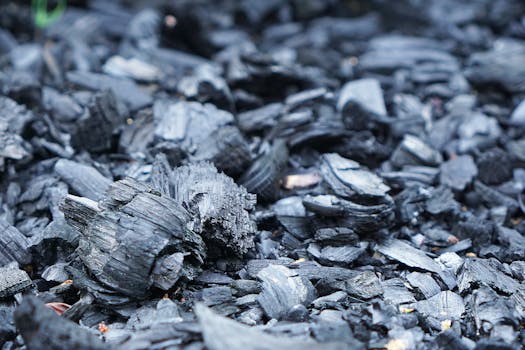How to Prepare Biochar in Metal Barrels: A Simple Method
Biochar is a carbon-rich material produced through the pyrolysis of organic matter, which has gained significant attention for its potential benefits in agriculture, soil health, and carbon sequestration. Preparing biochar at home using metal barrels is a straightforward and effective method that can be adopted by gardeners, farmers, and sustainability enthusiasts alike. This article will guide you through the process of making biochar in metal barrels, highlighting its benefits, necessary materials, and step-by-step instructions.
Understanding Biochar and Its Benefits
Before diving into the preparation process, it’s essential to understand what biochar is and why it is beneficial. Biochar is created by heating organic materials, such as wood chips, leaves, or agricultural waste, in a low-oxygen environment. This process, known as pyrolysis, converts the biomass into a stable form of carbon that can improve soil fertility and structure.
- Soil Improvement: Biochar enhances soil fertility by increasing nutrient retention and improving water-holding capacity.
- Carbon Sequestration: It helps in capturing carbon dioxide from the atmosphere, thus mitigating climate change.
- Waste Management: Utilizing agricultural and forestry waste for biochar production reduces landfill waste and promotes recycling.
Materials Needed for Biochar Production
To prepare biochar in metal barrels, you will need the following materials:
- Metal Barrel: A 55-gallon steel drum is ideal for this process.
- Organic Material: Choose biomass such as wood chips, leaves, or crop residues.
- Drill: For creating air holes in the barrel.
- Firestarter: Use lighter fluid, kindling, or other fire-starting materials.
- Protective Gear: Gloves, goggles, and a mask for safety during the process.
Step-by-Step Guide to Making Biochar
Now that you have gathered the necessary materials, follow these steps to prepare biochar in a metal barrel:
1. Prepare the Barrel
Start by preparing your metal barrel. Drill several small holes (about 1/4 inch) in the bottom and sides of the barrel to allow for airflow. This will facilitate the combustion process and help control the temperature during pyrolysis.
2. Fill the Barrel with Organic Material
Next, fill the barrel with your chosen organic material. It’s best to use dry biomass, as moisture can hinder the pyrolysis process. Aim for a mix of different materials to enhance the quality of the biochar.
3. Ignite the Fire
Using your firestarter, ignite the organic material at the top of the barrel. The fire will burn downwards, creating the necessary heat for pyrolysis. Ensure that the barrel is placed in a safe, open area away from flammable materials.
4. Monitor the Process
As the fire burns, monitor the temperature and airflow. You may need to adjust the air holes to control the combustion rate. The pyrolysis process can take several hours, depending on the amount of biomass and the size of the barrel.
5. Cool and Collect the Biochar
Once the fire has completely burned out and the smoke has diminished, allow the barrel to cool down. This may take several hours. After cooling, carefully remove the biochar from the barrel. It should be a lightweight, black, and crumbly material.
Using Your Biochar
After preparing your biochar, it’s essential to activate it before use. This can be done by mixing it with compost or soaking it in nutrient-rich solutions. Incorporating biochar into your garden or agricultural soil can significantly enhance its fertility and structure.
Conclusion
Preparing biochar in metal barrels is a simple yet effective method that can yield significant benefits for soil health and environmental sustainability. By following the steps outlined in this article, you can create your own biochar at home, contributing to waste reduction and carbon sequestration efforts. Remember to prioritize safety during the process and consider the various ways to utilize your biochar for optimal results. With the growing interest in sustainable practices, making biochar is not just a beneficial endeavor but also a step towards a greener future.
